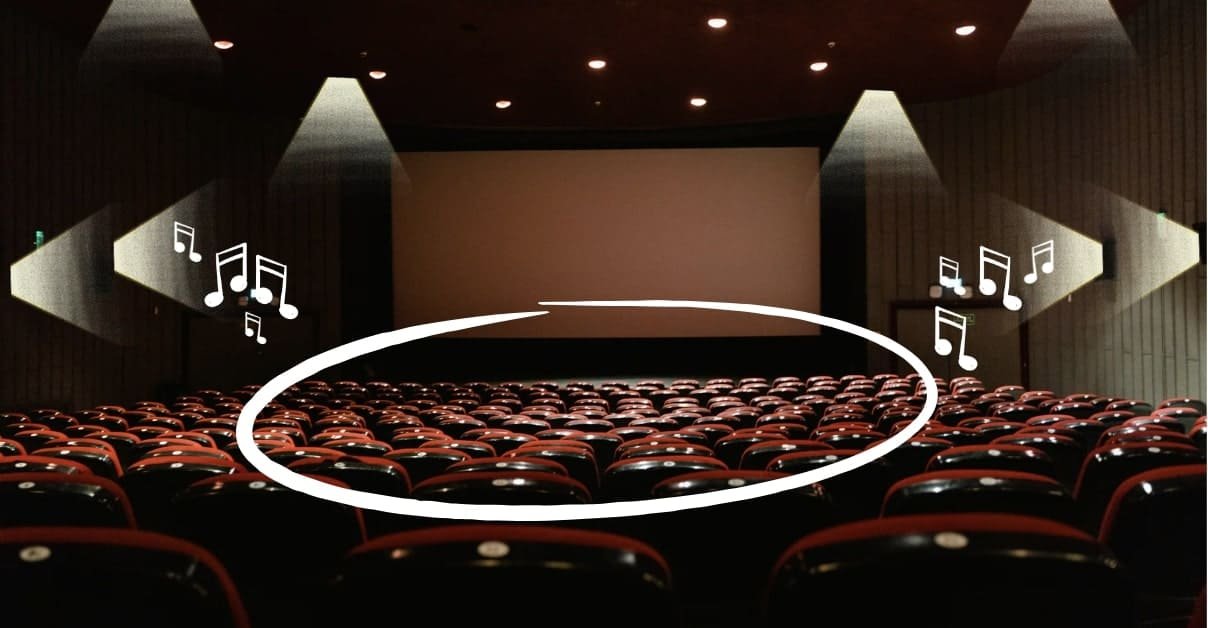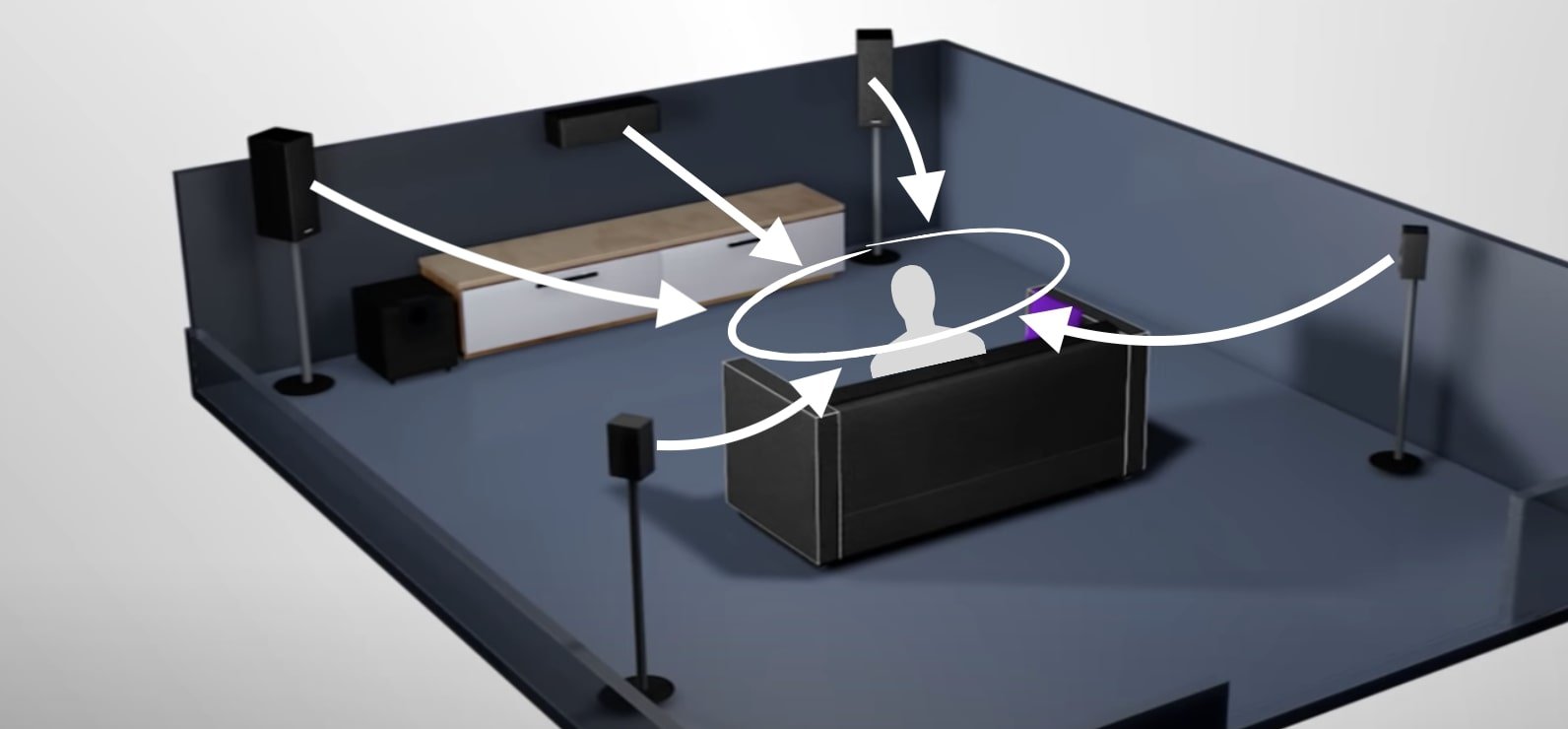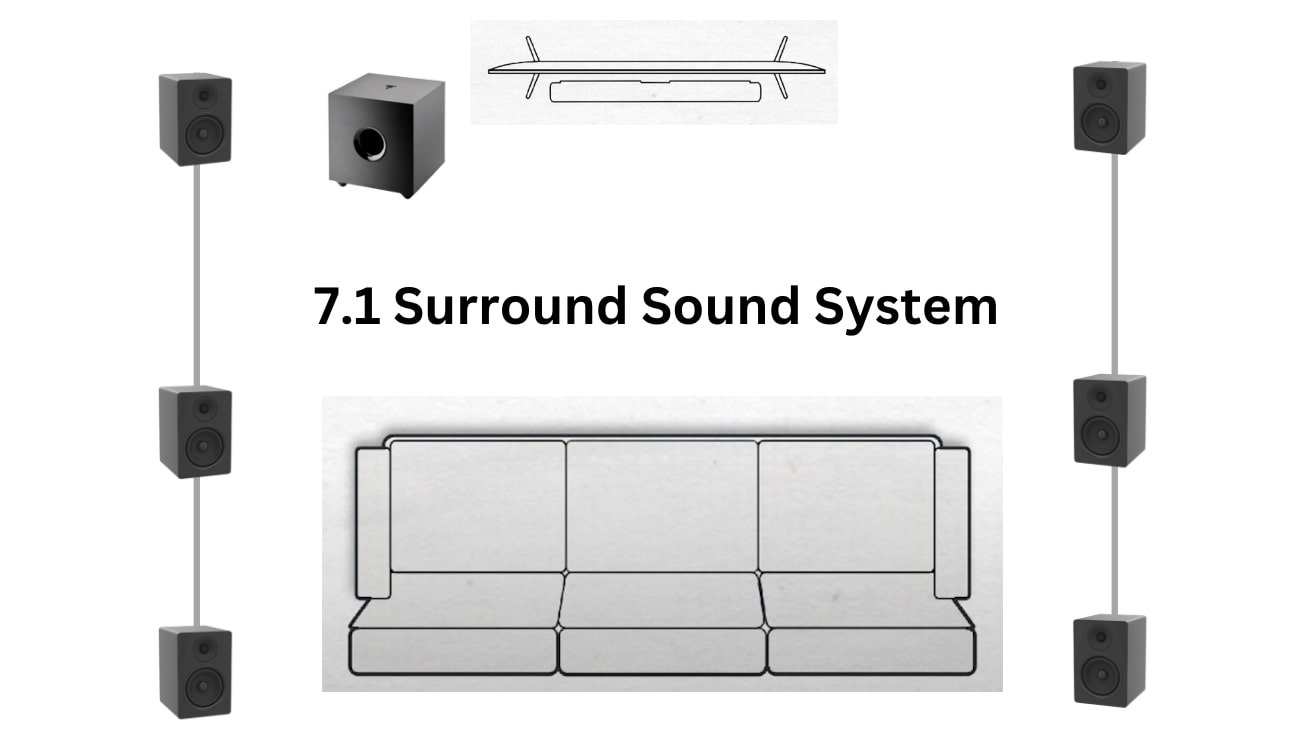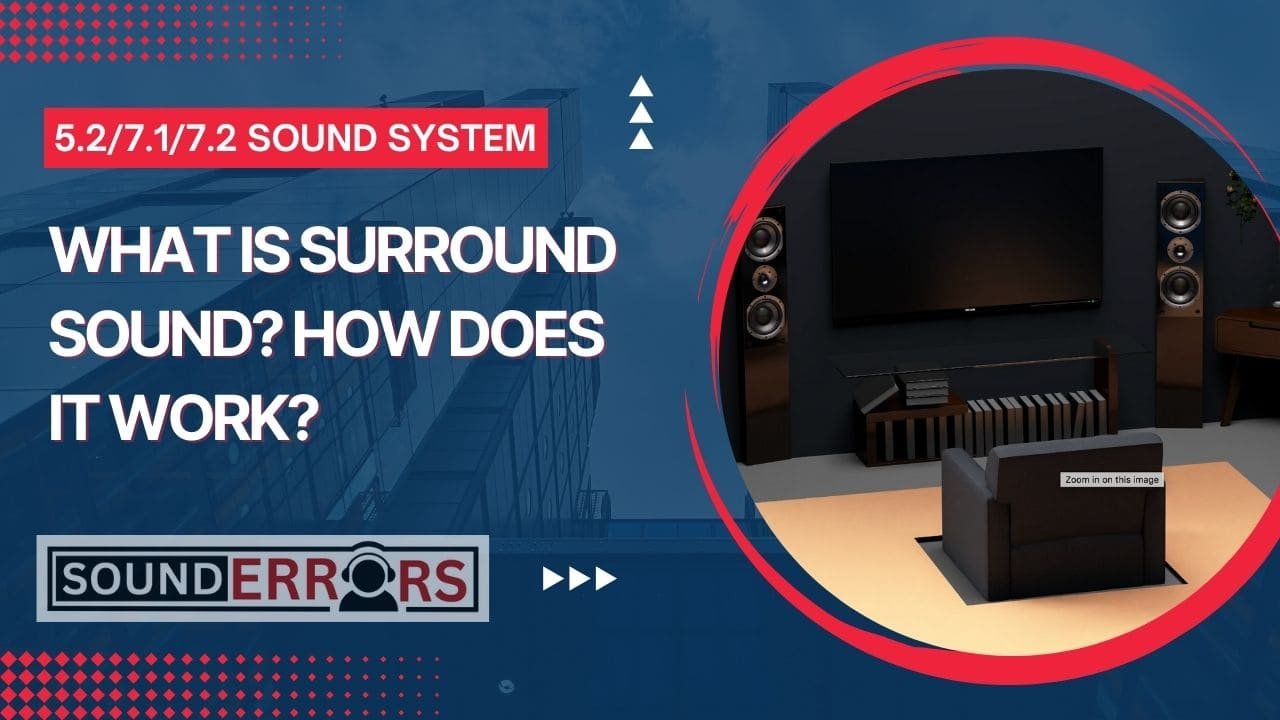This Post may contain affiliate links, when you purchase through links on our site, we may earn an affiliate commission at no extra cost to you. Here’s how it works.
In a world where entertainment is not just about what you see but also about what you hear, the term “surround sound” resonates profoundly.
Table of Contents
ToggleIt’s more than just a catchphrase; it’s an experience that transcends traditional audio setups, enveloping you in a realm of auditory wonder.
But what is surround sound, and how does it elevate our audiovisual encounters?
Read the article and explore all the queries that come to your mind for Surround sound.
What Does Surround Sound Mean?
At its core, surround sound is an audio technology that aims to replicate the spatial environment of sound in real life, creating an immersive listening experience.
Imagine being in a movie theater, where the soundscape envelops you from every direction, or sitting in the midst of a concert hall, where each note reverberates around you, enriching your senses.

That’s the essence of surround sound – it transports you, blurring the lines between reality and fiction, and enhancing your connection to the audiovisual content.
How Does Surround Sound Work?
Surround sound systems achieve their magic through a combination of audio processing and speaker placement.
By strategically positioning speakers around the listener, these systems can recreate the sensation of sound coming from different directions.

For instance, the front speakers handle dialogue and frontal audio effects, while the rear speakers immerse you in ambient sounds and background noises.
This spatial distribution, coupled with advanced audio processing algorithms, tricks your brain into perceiving a holistic soundscape, much like you would experience in the real world.
What Is 7.1 Surround Sound?
Now, let’s delve into the intricacies of 7.1 surround sound. The “7” and the “1” denote the number of channels and subwoofers, respectively, in the audio setup.
In a 7.1 configuration, you have seven distinct audio channels – front left, front center, front right, side left, side right, rear left, and rear right – each delivering unique audio cues.

These channels work in tandem to simulate a three-dimensional auditory environment, giving you a heightened sense of immersion.
The “.1” refers to the subwoofer channel, dedicated to handling low-frequency effects (LFE).
This channel adds depth to the audio experience by reproducing bass frequencies with precision, making explosions rumble and footsteps resonate with impact.
Together, the seven channels and the subwoofer create a rich tapestry of sound, elevating your listening pleasure to new heights.
How to Set Up 7.1 Surround Sound?
Setting up a 7.1 surround sound system can seem daunting, but with the right guidance, it’s entirely manageable. Here’s a step-by-step guide to help you get started:
- Choose Your Speakers: Begin by selecting high-quality speakers for each channel – front left, front center, front right, side left, side right, rear left, rear right, and the subwoofer. Opt for speakers that match in terms of brand and specifications for optimal performance.
- Find the Ideal Placement: Proper speaker placement is crucial for achieving the best surround sound experience. Place the front left, front center, and front right speakers in front of your viewing area, with the center speaker ideally positioned directly below or above your display. The side and rear speakers should be positioned to your sides and behind you, respectively, at ear level or slightly above.
- Calibrate Your System: Most modern AV receivers come with built-in calibration tools to help you fine-tune your surround sound setup. Follow the on-screen instructions to set speaker distances, levels, and crossover frequencies for seamless integration.
- Connect Your Sources: Connect your audio and video sources – such as Blu-ray players, game consoles, and streaming devices – to your AV receiver using HDMI cables. Make sure to configure your sources to output audio in surround sound formats like Dolby Digital or DTS.
- Test and Adjust: Once everything is connected through hidden wires, play test tones through each speaker individually to ensure they’re functioning correctly. Make any necessary adjustments to speaker placement, levels, and settings until you’re satisfied with the results.
- Enjoy Your Surround Sound: With your 7.1 surround sound system properly set up and calibrated, sit back, relax, and immerse yourself in a world of cinematic audio bliss.
What is 7.2 Surround Sound?
7.2 surround sound takes the immersive audio experience of 7.1 to the next level by adding an additional subwoofer channel.
In a 7.2 configuration, you have the same seven audio channels as 7.1 – front left, front center, front right, side left, side right, rear left, and rear right – but with two subwoofers instead of one.
This dual subwoofer setup provides deeper bass response and more even distribution of low-frequency effects, resulting in a more impactful and immersive listening experience.
What is 5.2 Surround Sound?
5.2 surround sound is a popular audio setup that offers a balance between immersive sound and simplicity.
In a 5.2 configuration, you have five audio channels – front left, front center, front right, rear left, and rear right – along with two subwoofers. Make all speakers connected and enjoy immersive audio.
This setup is commonly used in smaller home theater environments or gaming setups where space may be limited but a high-quality audio experience is still desired.
With two subwoofers, 5.2 surround sound systems deliver enhanced bass response and a more dynamic listening experience compared to traditional stereo setup.
The Evolution of Surround Sound
Surround sound technology has come a long way since its inception.
From the early days of stereo and mono setups to the sophisticated configurations of today, the quest for audio perfection has been relentless.
With advancements in digital signal processing, high-definition audio formats, and immersive sound technologies like Dolby Atmos and DTS:X, surround sound systems have reached unprecedented levels of realism and fidelity.
Conclusion:
In a world where sensory experiences define our interactions with media, surround sound stands as a testament to the power of immersive audio.
Whether you’re watching a blockbuster movie, gaming with friends, or simply listening to your favorite music, the allure of surround sound beckons you to step into a world where sound knows no boundaries.
So, the next time you find yourself surrounded by the symphony of audio, remember that it’s not just sound – it’s an invitation to immerse yourself fully in the magic of surround sound and discover what is surround sound truly capable of delivering.
